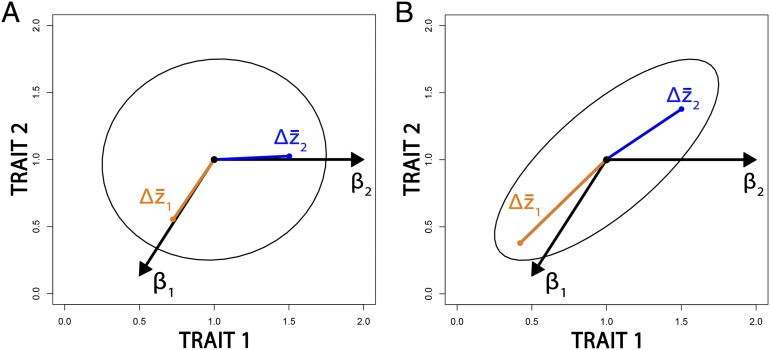Fig. 1.
The differences between the force of directional selection (β) and responses to selection for two traits that are independent (A) or that strongly covary (B). In both examples, we subject the trait means to two selection gradients (β1 and β2). The traits are uncorrelated in A, so responses to selection will closely match the vectors of the selection gradients (β1 and β2). Studies that use the mean differences in traits between groups to indicate how those traits responded to selection implicitly assume this framework for selection. However, in B, the strong covariance between traits affects the ability of the traits to respond to certain selection gradients. A selection gradient (β1) similar to the major axis of variation will result in responses to selection that closely parallel that axis and yield a larger response than in uncorrelated traits. In contrast, a selection gradient that greatly departs from the major axis (β2), and which is positive for trait 1 but zero for trait 2, will nonetheless result in positive responses to selection for both traits because of their covariance. Adapted with permission from ref. 21; see box 1 and figure 1 in ref. 21 for a more comprehensive exploration of the effect of trait covariance on responses to selection.

